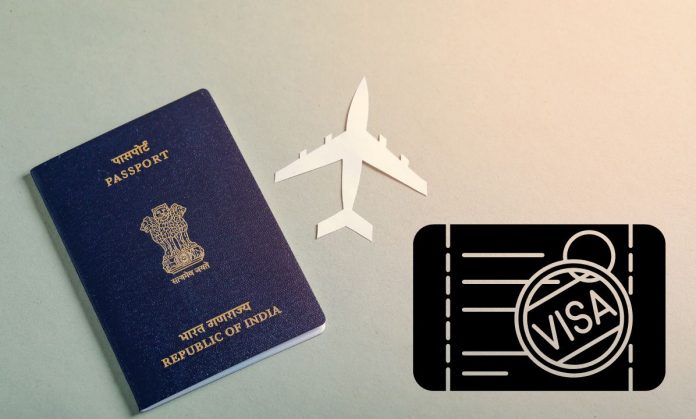The growing availability of visas on arrival for Indian citizens has significantly eased international travel for passport holders in 2024. According to the recent Henley Passport Index 2024, the Indian passport has risen to the 80th rank, a notable improvement from the 87th position in 2022. This upgrade grants holders visa-free access to 57 countries, streamlining global travel. Many nations now allow individuals to bypass the complexities of visa applications and complete essential paperwork upon arrival.
List of Countries Offering Visa-on-Arrival for Indians in 2024:
As per the Passport Index, here is the updated list of countries providing visa-on-arrival for Indians as of January 23, 2024.
| Country | Number of Days | Continent |
| 1. Bolivia | 90 days | South America |
| 2. Burundi | 30 days | Africa |
| 3. Cambodia | 30 days | Asia |
| 4. Cape Verde | 90 days | Africa |
| 5. Comoros | 45 days | Africa |
| 6. Ethiopia | 30 days | Africa |
| 7. Guinea-Bissau | 90 days | Africa |
| 8. Indonesia | 30 days | Asia |
| 9. Jordan | 30 days | Asia |
| 10. Laos | 30 days | Asia |
| 11. Madagascar | 90 days | Africa |
| 12. Maldives | 30 days | Asia |
| 13. Marshall Islands | 90 days | Oceania |
| 14. Myanmar | 30 days | Asia |
| 15. Palau | 30 days | Oceania |
| 16. Qatar | 30 days | Asia |
| 17. Saint Lucia | 30 days | North America |
| 18. Samoa | 30 days | Oceania |
| 19. Sierra Leone | 30 days | Africa |
| 20. Sri Lanka | 90 days | Asia |
| 21. Tanzania | 30 days | Africa |
| 22. Timor-Leste | 30 days | Asia |
| 23. Togo | 30 days | Africa |
| 24. Tuvalu | 30 days | Oceania |
| 25. Zimbabwe | 30 days | Africa |
Process of Visa on Arrival for Indians:
Acquiring a this type of visa is a relatively straightforward process, although it may vary slightly from one country to another. Here’s a simplified step-by-step guide:
Complete Arrival Card:
Most countries require travellers to fill out an arrival card, usually provided on the flight or at the airport. The card includes crucial details such as name, passport number, purpose of visit, and duration of stay.
Prepare Documentation:
Ensure all necessary documents are available, including a valid passport (with at least six months validity from the intended departure date), proof of funds, a return or onward flight ticket, and sometimes a passport-sized photograph.
Arrival at Destination:
Upon arrival at the destination airport, proceed to the visa-on-arrival counter, typically located in the immigration section.
Visa Application:
Fill out the visa application form provided at the counter, possibly including supporting documents like hotel reservations or proof of funds.
Payment of Visa Fees:
Pay the applicable visa fees, which can vary based on the country and the duration of the stay. Fees are usually payable in the local currency or, at times, in US Dollars.
Visa Issuance:
Once the application and payment are processed, immigration authorities will issue the visa on the spot. It is crucial to verify all details on the visa sticker before leaving the counter.
Duration of Stay:
Be aware of the maximum stay duration permitted on the visa, as overstaying could result in fines or other legal consequences.
Through this kind of visa, individuals are ready to explore their destination without hassle. To maximize the journey, it is crucial to adhere to local laws and regulations.
Distinctions Between Visa on Arrival and Visa-Free Travel:
While both options offer ease of travel, there are key differences between visa-on-arrival and visa-free travel for Indians:
Visa on Arrival:
- Requires an application, necessary documents, and often a visa fee.
- Stay duration is typically limited, varying by country.
- Overstaying may result in fines or penalties.
Visa-Free Travel:
- No prior application, fee payment, or paperwork is required.
- Stay duration varies by country, determined by bilateral agreements.
- Overstaying may lead to fines or deportation.
- A valid passport and meeting entry requirements are necessary.
In summary, both options offer travel convenience, but visa-free entry is often simpler, requiring no additional paperwork or fees. The specifics can vary, so thorough research on requirements is essential before the trip.
FAQs:
- Is a visa-on-arrival the same as a tourist visa?
No, a visa on arrival differs from a tourist visa in several ways. The application process for a tourist visa is more complex, requiring advance application through embassies, while the other is obtained directly at the destination upon arrival.
- Are visa-on-arrival policies subject to change?
Yes, visa-on-arrival policies can change due to international agreements or shifts in a country’s immigration regulations. Checking the latest requirements before travelling is recommended.
- Can I extend my stay on a visa on arrival?
In some cases, extending the stay may be possible by visiting the local immigration office, subject to the specific rules of each country.
- Are there additional fees for visa-on-arrival besides the visa fee?
Besides standard visa fees, some countries may impose additional charges or fees upon arrival, such as tourism taxes or entry fees. Being prepared for such costs, including carrying local currency, is advisable to ensure a smooth entry process. Always inquire about potential additional fees when arriving at the destination and plan currency exchange accordingly.
































